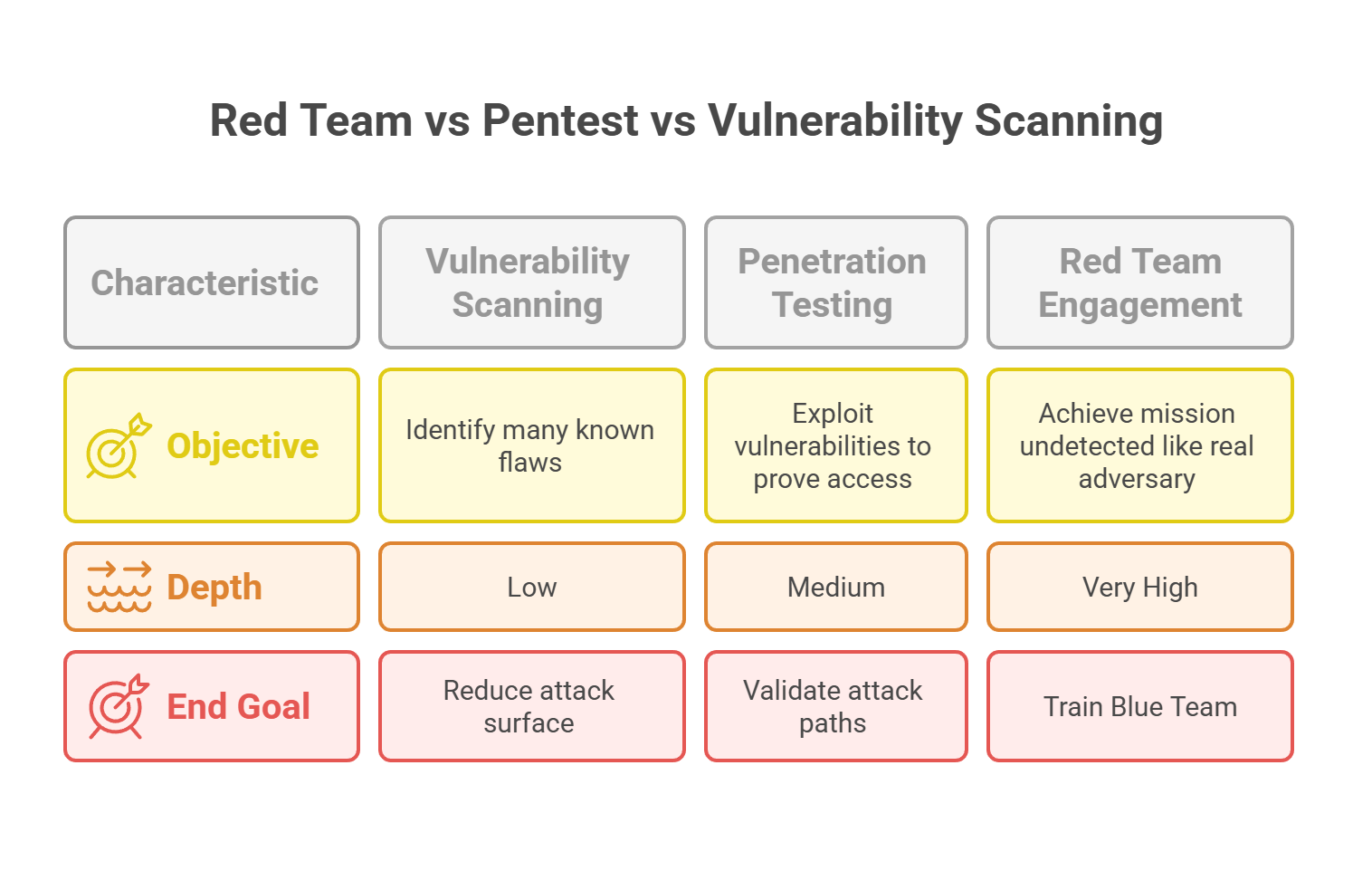About RTW
Introduction
RedTeamer.wiki is a knowledge and reference project dedicated to making the concepts, methodologies, and practices of Red Teaming accessible to a wide audience of security professionals.

The main objective is to share, document, and propagate the notion of Red Teaming, while clearly explaining its differences from penetration testing and vulnerability scanning.
A quick reminder
In the professional field of cybersecurity, a wide range of jargon and terminology is constantly used. These short illustrations are designed to help you cut through the noise and keep the essentials in mind.
- Vulnerability Assessment → Focus on identifying flaws.
- Penetration Testing → Focus on exploiting those flaws.
- Red Teaming → Emulates real-world threat actors to test people, processes, and technology under realistic conditions.

This project aims to:
- Provide technical and theoretical support for cybersecurity experts.
- Serve as a practical guide for structuring Red Team engagements.
- Act as a knowledge repository (paper keep memory) to preserve lessons learned and best practices.
Legal Notice
All information, techniques, and methodologies described in RedTeamer.wiki are intended solely for authorized and ethical use in professional contexts such as authorized security testing, training, and research.
RedTeamer.wiki is not responsible for any misuse of the provided content. Applying these techniques without explicit permission from the target owner is illegal and punishable by law in most jurisdictions.
What You Will Find Here
This knowledge base is more than just documentation — it is a comprehensive reference hub for Red Team operations, structured to cover the entire lifecycle of offensive security engagements.
Whether you are a professional operator, a security researcher, or an organization building resilience, here is what you will discover:
1. A Brief History and Purpose
RedTeamer.wiki was created to consolidate Red Team knowledge in a single place.
In today’s cybersecurity landscape — where Advanced Persistent Threats (APTs), ransomware groups, and nation-state actors push the limits — Red Teaming has become essential to test defenses under realistic attack conditions.
2. Full Scope of Coverage
From initial planning to final reporting, the knowledge base provides guidance across all phases of an engagement:
- Reconnaissance & OSINT: footprinting, intelligence collection, and adversary mapping.
- Initial Access: phishing, web exploitation, supply chain, and exposed service abuse.
- Privilege Escalation: Windows, Linux, and Cloud privilege escalation techniques.
- Lateral Movement: moving across domains and infrastructures while maintaining stealth.
- Persistence: strategies to remain undetected and keep long-term access.
- OPSEC & Evasion: living-off-the-land, AV/EDR bypass, and network cloaking.
- Exfiltration: covert data exfil techniques (DNS tunneling, HTTPS, staged leaks).
- Reporting & Debrief: methodologies to communicate findings and strengthen defenses.
Each section is mapped to real-world TTPs (Tactics, Techniques & Procedures) and aligned with frameworks like MITRE ATT&CK to ensure operational relevance.
3. Core Methodology: Get In, Stay In, Act
The philosophy behind this project is distilled into three principles:
- Get In → Gain initial access, replicate real attacker entry points.
- Stay In → Maintain persistence and evade detection while exploring the environment.
- Act → Achieve mission objectives: privilege escalation, lateral movement, and data exfiltration.
By exploring this RTW knowledge base, you will find resources on
- Red Teaming methodology
- Adversary emulation
- Offensive security techniques
- Threat intelligence integration
- Advanced hacking TTPs for Red Team operations
- Reconnaissance, privilege escalation, lateral movement, persistence, evasion, exfiltration, and reporting